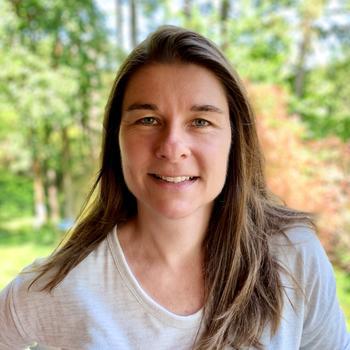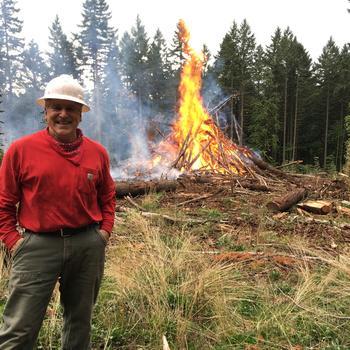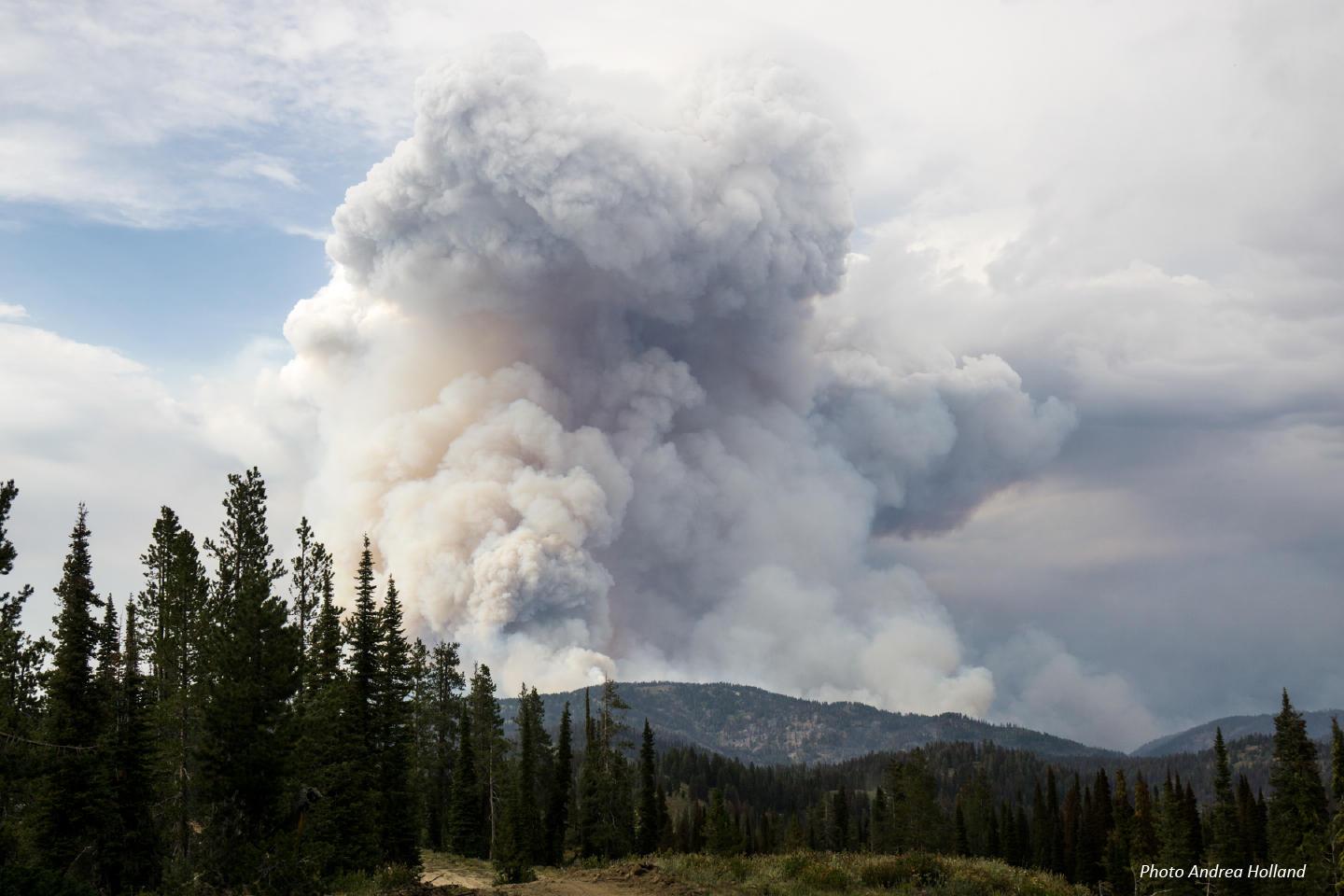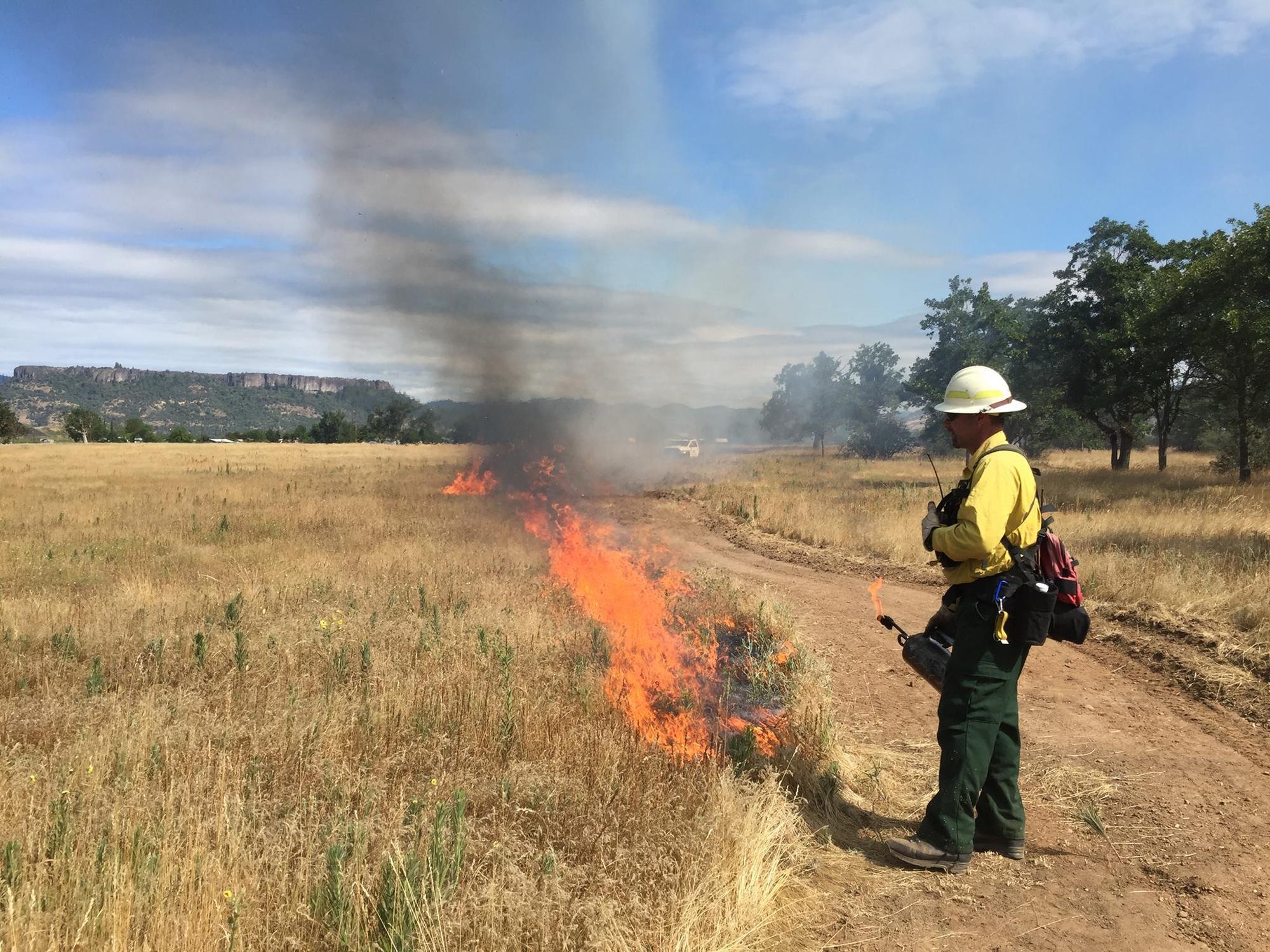Fire is a natural disturbance and is needed to keep forests healthy and resilient. Some forest types, such as ponderosa pine forests, are fire-adapted. These forest types historically experienced frequent, low-intensity and occasional mixed-severity fires. Fire-adapted forests depend on fire to thin out the understory and reduce competition so trees have room to grow. Fire also cleans the forest floor of organic debris and releases valuable nutrients to the soil.
Fire managers use prescribed fire to mimic the natural role of fire on the landscape. Prescribed fire (also called controlled burning) is, therefore, an important tool that is applied to the landscape in a planned and controlled way to meet management objectives. Management objectives might include:
- Reducing surface and ladder fuels that contribute to increased risk of uncharacteristically severe wildfire
- Reducing the risk of, and helping protect local communities from, wildfire
- Helping protect natural resources, such as timber and important habitat
- Promoting native species
- Enhancing landscape resiliency and recovery from a wildfire event
- Improving firefighters’ ability to safely and effectively respond to and suppress wildfire
Prescribed fires are conducted within the limits of a fire plan, called a “prescription.” A prescription is a set of conditions that considers the safety of the community and firefighters, weather, fuel, and the probability of meeting the management objectives.
Where there’s fire, there’s smoke
Prescribed fires and wildfires produce smoke. Smoke is made up of a complex mixture of gases and fine particles that are produced when wood and other organic materials (fuels) burn. Smoke primarily consists of carbon monoxide, carbon dioxide, water vapor, hydrocarbons and other organic chemicals, nitrogen oxides, trace minerals, and particulate matter (PM). The fine particulate matter (PM 2.5) in smoke is the greatest concern to public health because it is inhaled deep into the lungs, where it can cause irritation, inflammation, and shortness of breath, and aggravate existing heart and lung diseases.
How does smoke from prescribed fire compare to smoke from wildfire?
Prescribed fires are regulated by states and are always subject to strict air-quality standards. Their use must be planned carefully to keep the smoke they produce at acceptable levels. Managers can predict the direction of smoke plumes by relying on meteorological reports and using computer models. Managers avoid smoke-sensitive areas by burning under weather conditions that minimize smoke formation and problems. Occasionally, smoke from a prescribed fire may accumulate in a community, but any impacts are typically light and often last no more than a few hours.
Wildfires, however, burn under uncontrolled and unplanned circumstances, making it difficult to manage how much smoke is produced and where it goes. The primary factor in determining the generation of smoke is the amount of vegetation consumed. Vegetation consumption depends on the type of fuel (grass, trees, dead fuel such as woody debris, etc.), amount of dead fuel, fuel moisture content, size of fuel, topography, duration of the fire, air temperature, relative humidity, and wind speed. Wildfires typically occur during the summer months, when fuels are drier and the likelihood of adverse weather conditions (high temperatures, low relative humidity, and sustained wind speeds) is greater. Under these conditions, wildfires consume more vegetation on a per acre basis than prescribed fires, resulting in more smoke emissions. As smoke emissions increase, the concentration of particles in the air increases.
In general, wildfires are far more likely to result in harmful air quality and public health impacts than prescribed fires because they are unplanned and typically are much larger. Wildfires also last longer, and burn and consume (on average) more vegetation per acre than prescribed fires.
Protect yourself from smoke exposure
- Talk with your health care provider before fire season to make plans.
- If you are particularly sensitive to smoke, consider temporarily evacuating the area with unhealthy levels of air pollution until air quality conditions improve.
- Limit outdoor physical activity.
- Buy an air purifier.
- Use a particulate mask such as an N-95 or P-100 respirator.
Resources
- AirNow. How Smoke from Fires Can Affect Your Health. https://www.airnow.gov/index.cfm?action=smoke.index. Date accessed, May 14, 2018.
- Bureau of Land Management. Why Do Prescribed Burning? https://www.blm.gov/or/resources/fire/prescribedburns/burn_bkgrnd.php. Date accessed, February 23, 2018.
- Environmental Protection Agency. Indoor Air Quality. https://www.epa.gov/indoor-air-quality-iaq/guide-air-cleaners-home. Date accessed, May 14, 2018.
- Environmental Protection Agency. Wildfires and Prescribed Burning. https://www3.epa.gov/ttnchie1/ap42/ch13/final/c13s01.pdf. Date accessed, February 23, 2018.
- Frisbey, D. 2008. A comparison of smoke emissions from prescribed burns and wildfires. M.S. Theses, San Jose State University, 62.
- Liu, X., G. Huey, R.J. Yokelson, et al. 2017. Airborne measurements of western U.S. wildfire emissions: Comparison with prescribed burning and air quality implications. Journal of Geophysical Research Atmospheres, 122(11): 6108-6129.
- Monroe, M.C., A.C. Watts, and L.N. Kobziar. 2016. Where There’s Fire, There’s Smoke: Air Quality and Prescribed Burning in Florida. School of Forest Resources and Conservation Department, UF/IFAS Extension FOR 62, 4.
- National Wildfire Coordinating Group. 2018. NWCG Smoke Management Guide for Prescribed Fire. PMS 420-2 | NFES 1279, 306.
- Oregon Smoke Information. https://oregonsmoke.blogspot.com/. Date accessed, May 14, 2018.
- US Forest Service Science Update. 2017. Smoke in a New Era of Fire. Issue 24, 16.
- Washington Smoke Information. https://wasmoke.blogspot.com/. Date accessed, May 14, 2018.
© 2018 Oregon State University.
Extension work is a cooperative program of Oregon State University, the U.S. Department of Agriculture, and Oregon counties. Oregon State University Extension Service offers educational programs, activities, and materials without discrimination on the basis of race, color, national origin, religion, sex, gender identity (including gender expression), sexual orientation, disability, age, marital status, familial/parental status, income derived from a public assistance program, political beliefs, genetic information, veteran’s status, reprisal or retaliation for prior civil rights activity. (Not all prohibited bases apply to all programs.) Oregon State University Extension Service is an AA/EOE/Veterans/Disabled.





